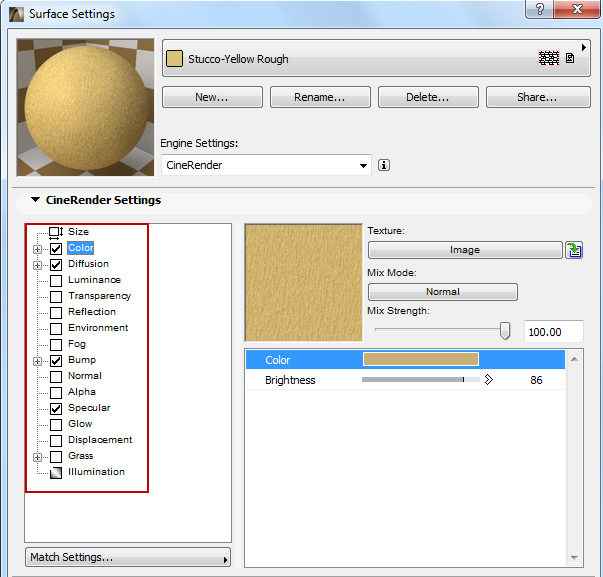
Surface Settings for the CineRender engine consist of a set of channels, listed on the left side of the dialog box. Each channel represents one surface property (e.g. Luminance, Fog, Environment, Normal, Alpha, Glow, Transparency, Specular, Displacement).

Many surfaces can be simulated using just a few channels. So don’t be intimidated by the numerous channels and their wide range of parameters. Generally speaking, all everyday surfaces can be created using just a handful of these channels.
Surface color
Irregularities in surface color (works by brightening and darkening the color channel)
Luminescent color (light-independent color)
Transparency (including refraction index)
Ability to reflect other objects
Environment reflection (simulates reflection)
Fog effect
Virtual bumps on a surface
Virtual surface irregularity that is lit realistically
Localized texture invisibility
Defines a highlight to make a surface appear reflective
Glow Halo around an object
Realistic bumps on a surface
Grass (CineRender Surface Channel)
Create realistic-looking grass as a surface
Use the Illumination channel in Surface Settings to enable or disable the generation and reception of Global Illumination (GI) to and from this surface, and to control the strength of the these effects:
•caustics
•diffuse falloff level
•roughness